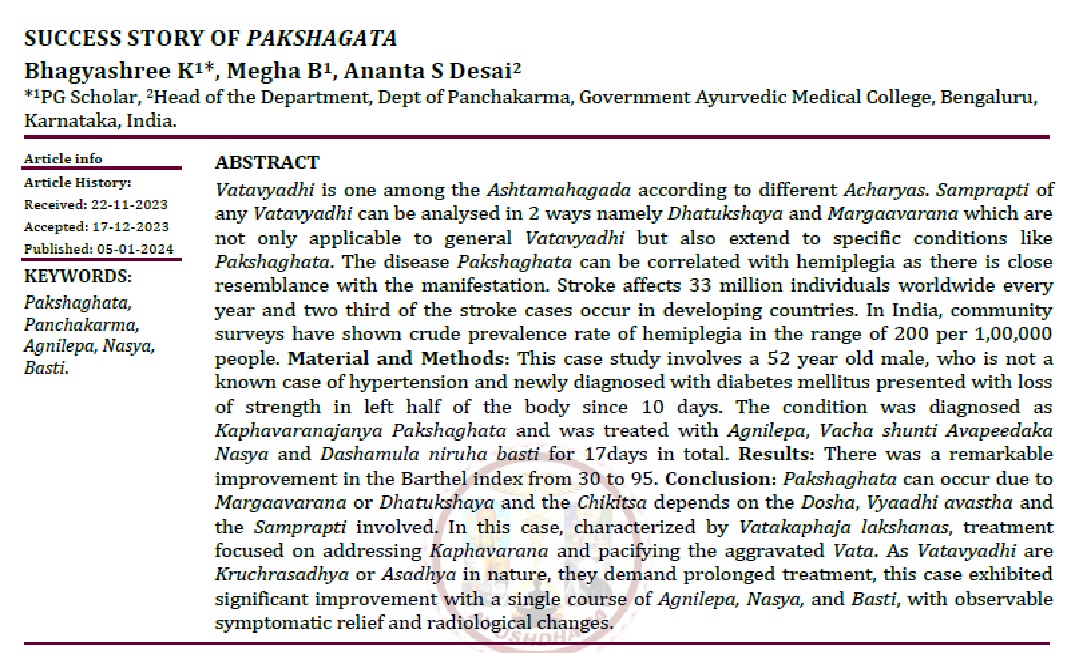Success Story of Pakshagata
DOI:
https://doi.org/10.47070/ayushdhara.v10i6.1453Keywords:
Pakshaghata, Panchakarma, Agnilepa, Nasya, BastiAbstract
Vatavyadhi is one among the Ashtamahagada according to different Acharyas. Samprapti of any Vatavyadhi can be analysed in 2 ways namely Dhatukshaya and Margaavarana which are not only applicable to general Vatavyadhi but also extend to specific conditions like Pakshaghata. The disease Pakshaghata can be correlated with hemiplegia as there is close resemblance with the manifestation. Stroke affects 33 million individuals worldwide every year and two third of the stroke cases occur in developing countries. In India, community surveys have shown crude prevalence rate of hemiplegia in the range of 200 per 1,00,000 people. Material and Methods- This case study involves a 52 year old male, who is not a known case of hypertension and newly diagnosed with diabetes mellitus presented with loss of strength in left half of the body since 10 days. The condition was diagnosed as Kaphavaranajanya Pakshaghata and was treated with Agnilepa, Vacha shunti Avapeedaka Nasya and Dashamula niruha basti for 17days in total. Results- There was a remarkable improvement in the Barthel index from 30 to 95. Conclusion- Pakshaghata can occur due to Margaavarana or Dhatukshaya and the Chikitsa depends on the Dosha, Vyaadhi avastha and the Samprapti involved. In this case, characterized by Vatakaphaja lakshanas, treatment focused on addressing Kaphavarana and pacifying the aggravated Vata. As Vatavyadhi are Kruchrasadhya or Asadhya in nature, they demand prolonged treatment, this case exhibited significant improvement with a single course of Agnilepa, Nasya, and Basti, with observable symptomatic relief and radiological changes.
Downloads

Downloads
Published
Issue
Section
License
Copyright (c) 2023 AYUSHDHARA

This work is licensed under a Creative Commons Attribution-NonCommercial-ShareAlike 4.0 International License.


